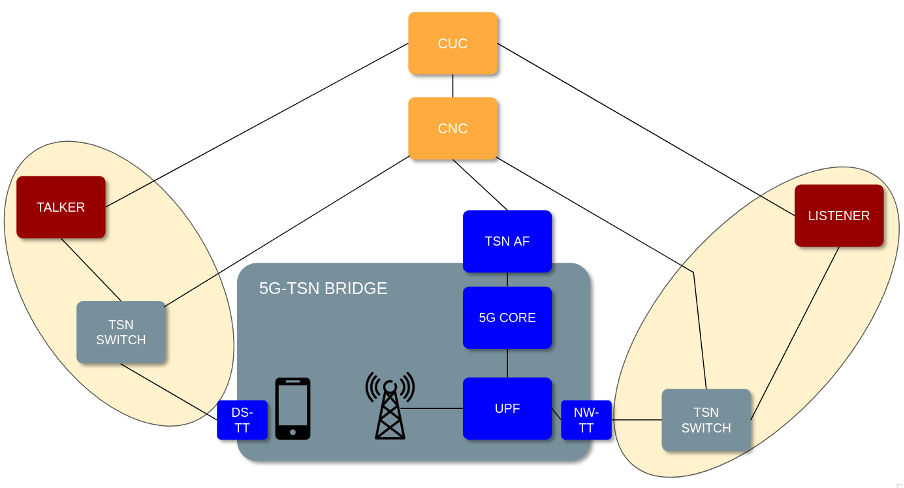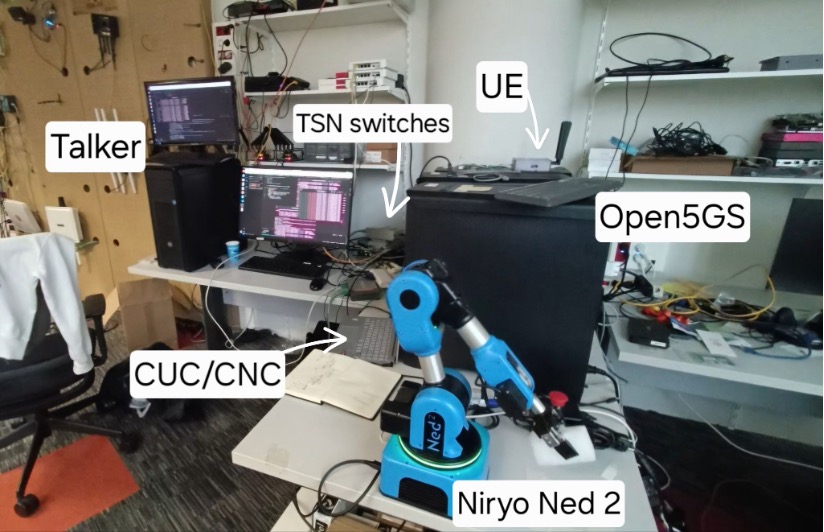
Keep up to date with our innovative initiatives.
Sign up here
Time-sensitive networking, a set of IEEE 802.1 standards to grant Quality of Service in Ethernet networks, is emerging as one of the main technologies in Industry 4.0 environments because of its characteristics (bounded low latency, high reliability, time synchronization, resource management…). Furthermore, the need to provide strict quality-of-service guarantees in industrial automation scenarios and the evolution towards smart factories, together with the needs for mobility, reduction of wires, and flexibility in the factory, motivate the integration of TSN with wireless technologies like 5G, which brings the required flexibility without compromising the advantages of TSN.
Among the existing 5G service categories (eMMB, mMTC, URLLC), Ultra-Reliable Low Latency Communications focuses on increasing reliability and lowering latencies of data transmissions, making it suitable for industrial communications and a perfect candidate for integration with TSN.
5G-TSN integration
Starting from Release 16, 3GPP standardized the architecture of the 5G-TSN integration. The 5G system is considered a TSN bridge in this new architecture. It must implement its typical functionalities (such as configuring scheduling in its ports and discovering and reporting its neighbours to the control plane, to name a couple).
A typical 5G-TSN scenario would look like the following diagram:

The 5G-TSN testbed in 6GSMART-EZ
Within the 6GSMART project, UPC and i2CAT have built a 5G-TSN integration testbed using 5G and TSN software and hardware. The testbed has been developed and evaluated with synthetic and real traffic sources and a 5G emulator at the UPC premises. It was later integrated at i2CAT laboratories with a 5G cell and a robotic arm (connected to the listener) to emulate a real industrial scenario. The testbed is shown in the following figure, following the previous scenario:

The evaluation of the testbed has demonstrated the traffic isolation and QoS capacities of both TSN and 5G, reaching the extreme KPIs expected.
More details about the testbed and the preliminary evaluation results can be found in the following publications:
A. Agustí-Torra, M. Ferré-Mancebo, D. Rincón-Rivera, C. Cervelló-Pastor and S. Sallent-Ribes, “Building a 5G-TSN Testbed: Architecture and Challenges,” 2024 24th International Conference on Transparent Optical Networks (ICTON), Bari, Italy, 2024, pp. 1-4
A. Agustí-Torra, M. Ferré-Mancebo and D. Rincón-Rivera, “Emulating Integrated 5G-TSN Scenarios,” 2024 15th International Conference on Network of the Future (NoF), Castelldefels, Spain, 2024, pp. 96-100
Author: Marc Ferré Mancebo, researcher at the Design and Evaluation of Broadband Networks and Services (BAMPLA) research group of the Universitat Politècnica de Catalunya (UPC)